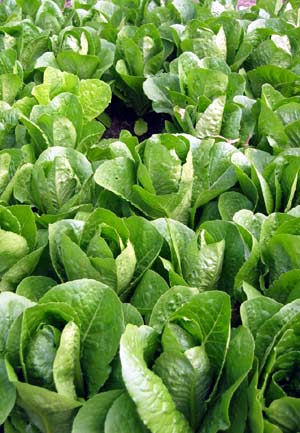|
IPM systems are being developed all over the world for a range of crops.
IPM systems are based on an understanding of the crop-pest-beneficial ecology and utilize a range of management strategies that may include the strategic use of pesticides for pest management.
This research project has developed guidelines to establishing the number of a particular pest that constitutes a problem that needs controlling (pest threshold). Improved spray application techniques and a wider range of choices for insecticidal control, were also developed.
Authors
|
| Sandra McDougall |
Tony Napier |
| Andrew Watson |
Joe Valenzisi |
| Meryl Snudden |
Gerard Kelly |
| Ashley Senn |
Leigh James |
| John Duff |
Tom Franklin |
| Glen Geitz |
|


Summary :
Insect pest management :
Although calender spraying is the most commonly used management technique, it can result in:
- unnecessary use of chemical and labour
- poor timing of sprays
- inappropriate choice of sprays
- insecticide resistance in target insects.
The range of control options for insects was very limited at the beginning of this project. The efficacy trial work that was carried out assisted with the registration of three products, a permit for a fourth and the potential registration of another two products for the key insect pest, Heliothis.
- Routine monitoring of lettuce crops in Hay indicated that insect species and numbers varied from paddock to paddock, week to week and with crop stage.
- Crop monitoring can identify which pests are present, at what stage in their lifecycle and in what numbers, hence help with decisions of whether control may be necessary, what to spray and when.
- Heliothis pheromone traps are not an accurate indication of egg numbers in the neighbouring paddock
- Spinosad, indoxacarb, Bacillus thuringiensis, emamectin benzoate and chlorfenapyr are as effective against Heliothis as methomyl, endosulfan or synthetic pyrethroids.
- The newly registered products are more expensive than the older products
- Growers are not very familiar with the pests in their fields, their lifecycles, mortality factors or behavioural patterns.
Disease management :
- Variability in knowledge of lettuce diseases, from grower to grower.
- A wide range of diseases found which varied with growing region and often from farm to farm.
- Irrigation contributes to many fungal diseases such as Downy mildew and Anthracnose.
- Drip irrigation, a useful option for some areas.
- Sclerotinia control possible with current fungicides sprayed at the correct time. However more fungicides for Sclerotinia control should be available to reduce chances of resistance.
- Monitoring for some diseases e.g. Downy mildew is very important.
- Projects looking at diseases are too short term.
Spray Application :
Many commonly used spray application techniques were evaluated for their efficiency in targeting pesticides to leaves.
Using fluorescent tracers, spray deposits on leaves were collected for a range of equipment types.
Some of the techniques tested have produced improvements to conventional application methods.
Even though the equipment used is important when applying insecticides to lettuce the lettuce canopy also has a large influence on the spray penetration and spray distribution on the plant.
The distribution on the plant is difficult to manipulate when spraying over the top with a boom.
- Calibration of ground based sprayers used in lettuce is very important.
- Spray penetration and uniformity of spray deposition across a paddock may be improved by using reduced nozzle spacings and/or reduced speeds.
- Boom sprayers fitted with droppers have the ability to direct more spray onto bottom part of the plant canopy compared with conventional over the top boom sprayers types.
Technical Transfer :
- A variety of technology transfer methods need to be used to cater to the wide range of stakeholder preferences and needs
- Immediate tangible results are what growers want
- Research with less immediate results is not strongly supported.
- This project was not truly as collaborative with growers as was intended.
The reasons include:
- it not being a familiar model for either the researchers or growers
- growers are busy; many of the growers seeing us regularly individually
- Intentions are not always followed by action
Acknowledgements :
The researchers acknowledge the financial support for this project from NSW Agriculture, Queensland Department of Primary Industries, Horticulture Australia, AUSVEG and Goldern State Foods.
The Australian Government provides matched funding for all HAL’s R&D activities.
Financial support for the first Australian Lettuce Industry Conference, which was organized as part of this project came from: Perfection Fresh, Yates, Rijk Zwaan, Dow Agrosciences and Dupont
|

